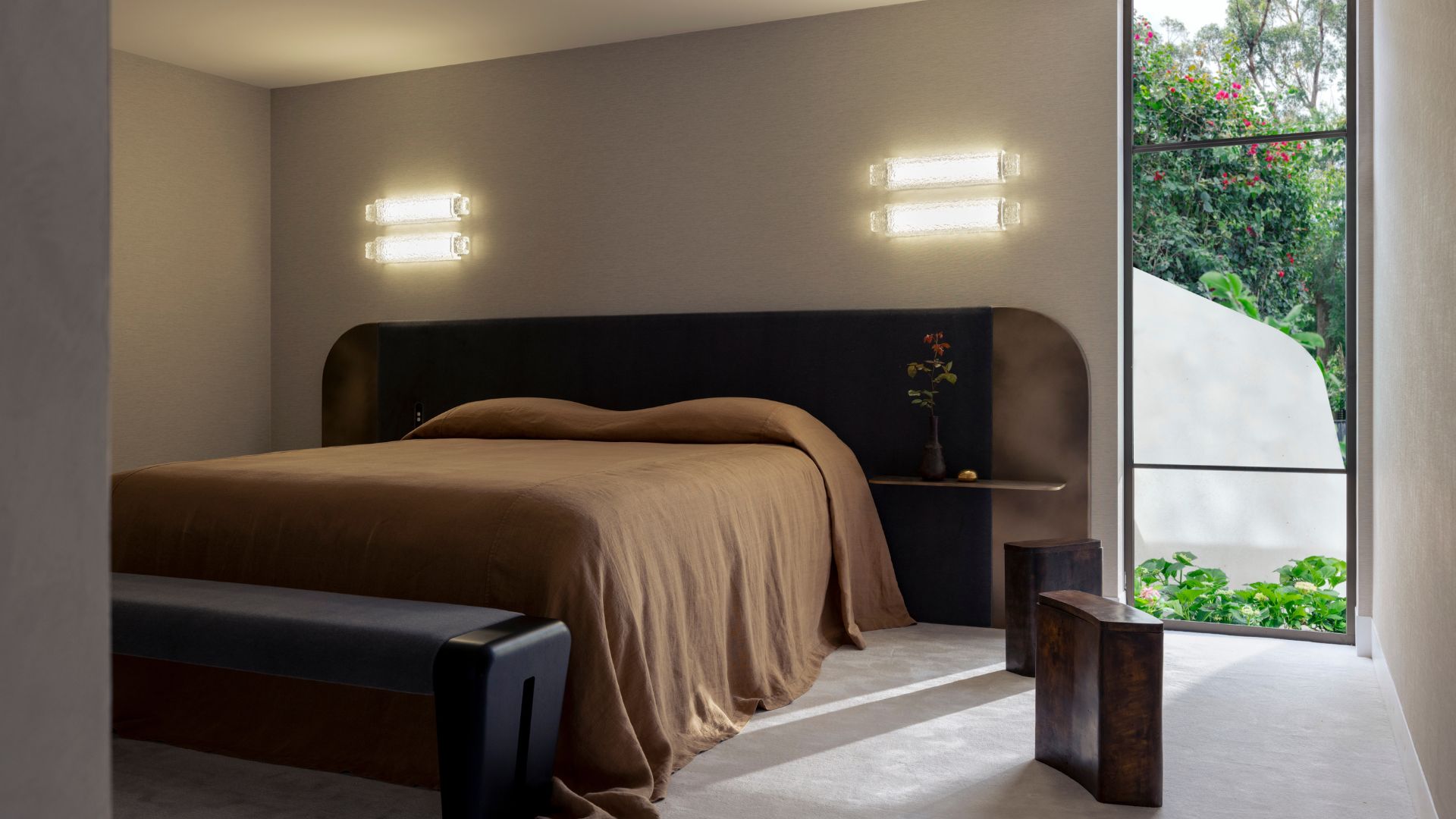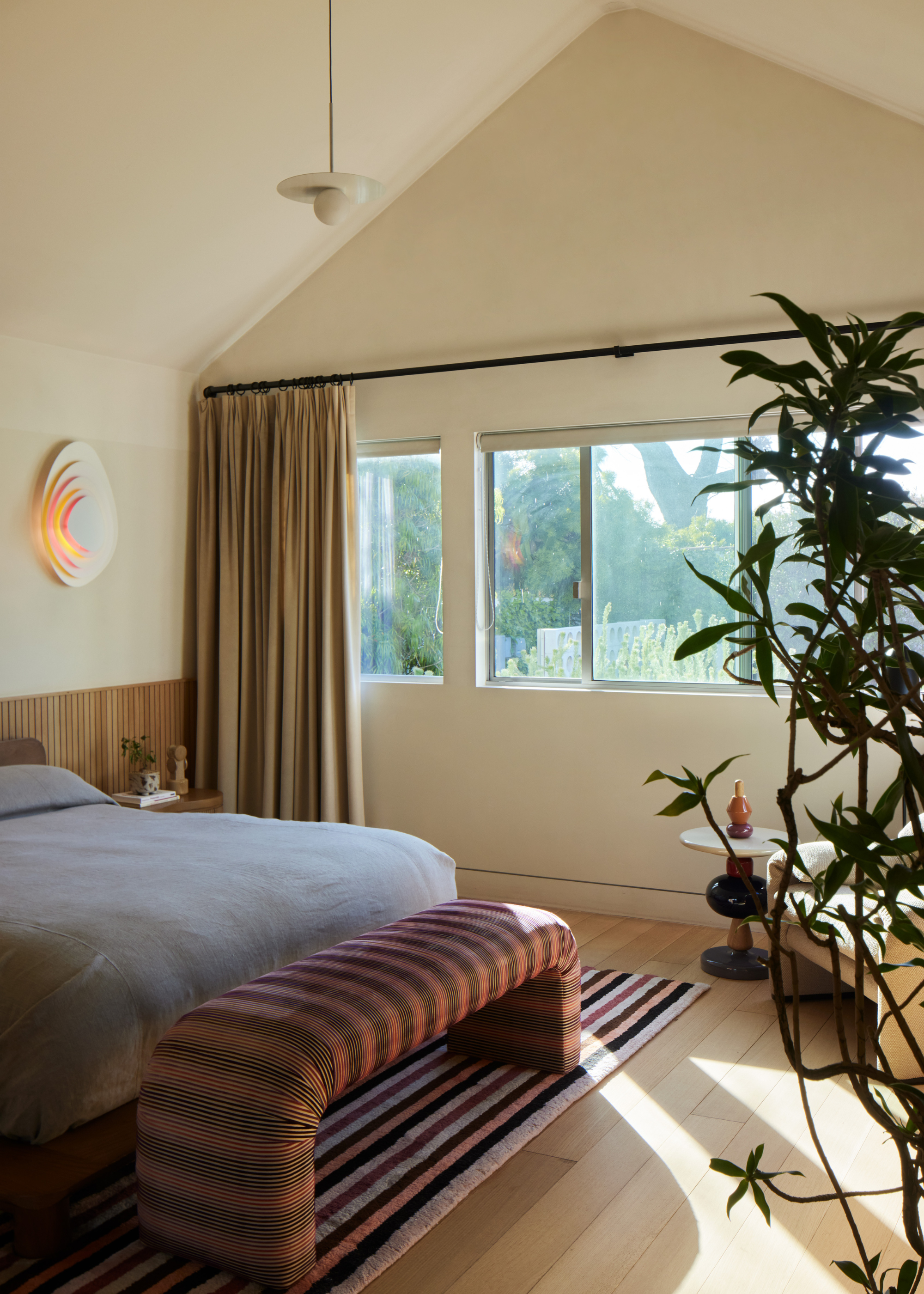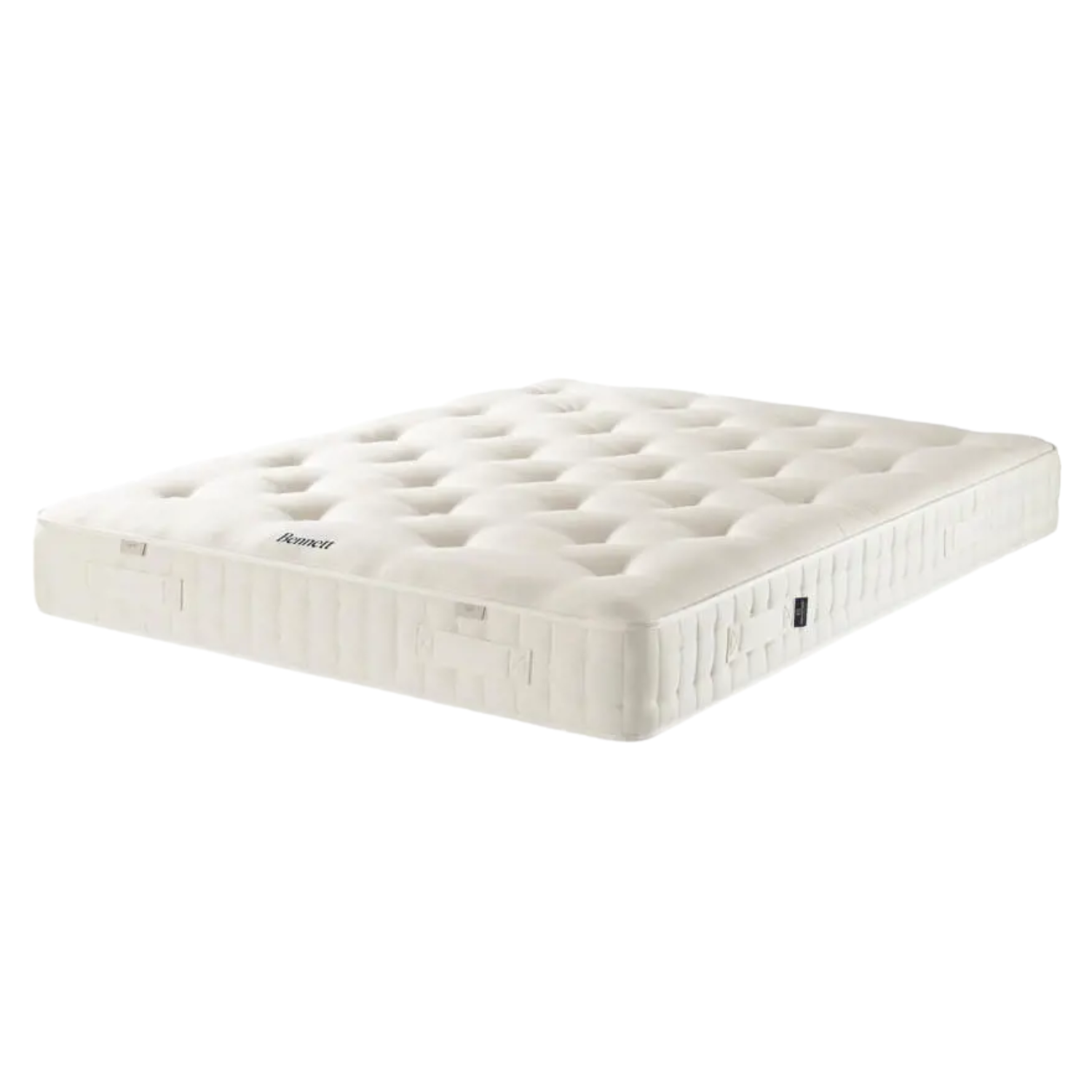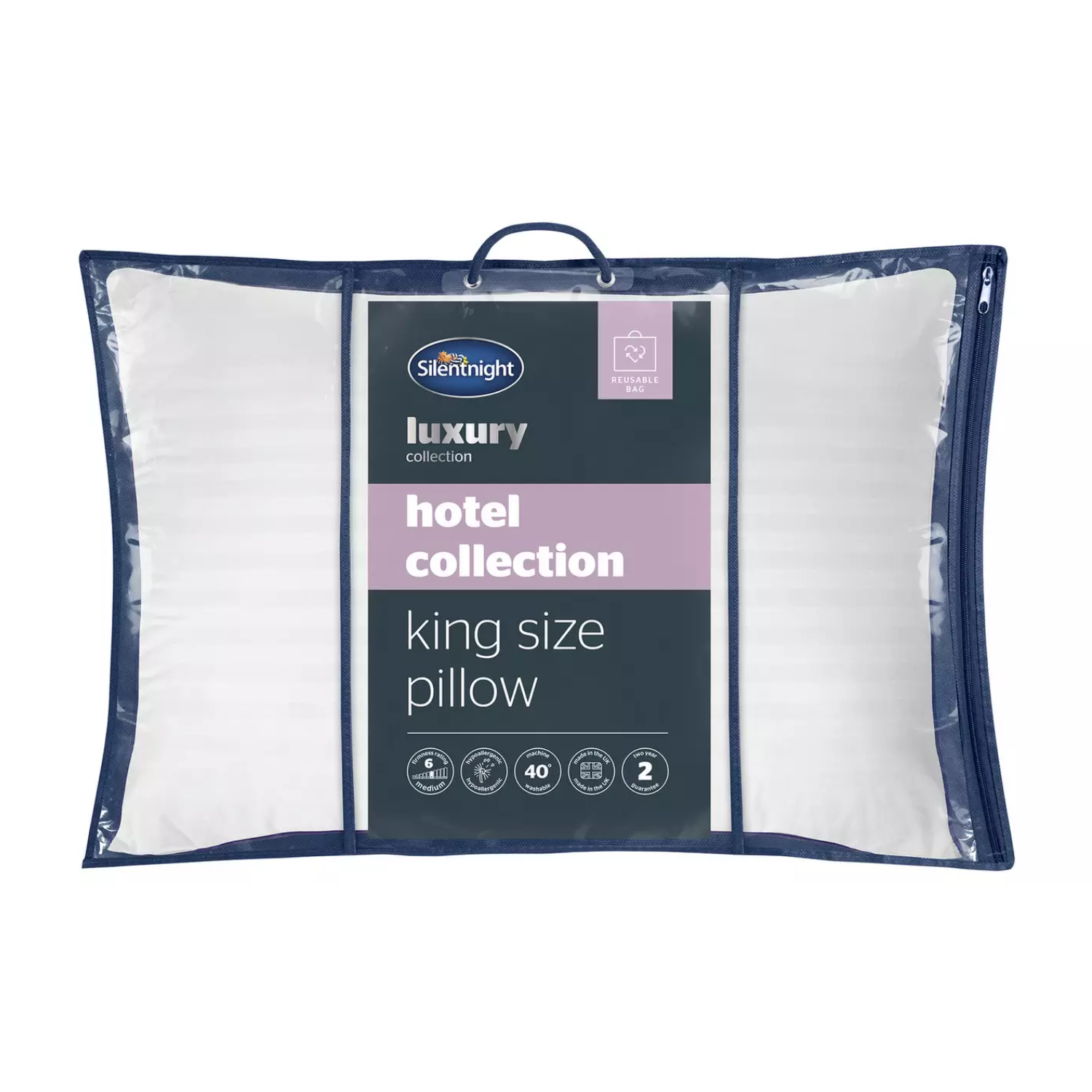'Sleep Divorce' Might Be the Saviour of Your Sleep (and Relationship) — Here's How It Can Be Done, Even If You Don't Have Separate Bedrooms
This might well be the answer to your disrupted sleep, but don't worry, it's not as doomsday as it sounds!


Yes, this idea takes the whole 'we don't have to do everything together' motto to the next level. But considering the quality of your sleep can make or break your mood for the day and have a significant impact on your health, it might be time to ask the (dare I say, unnecessarily) overly dreaded question: Is it time for us to get a sleep divorce?
I mean, anything in the name of learning how to sleep better, right? And as someone who is very much pro-sleep divorce, I believe that this shift in lifestyle could actually help bring you and your partner closer together — given that you go about making the shift in the right way, of course.
But, I'm getting ahead of myself. Let's first explore what sleep divorce is, and then we can get to understanding how to make this mod way of rest work.
What Is Sleep Divorce?

"Sleep divorce is when partners choose to sleep apart, often in separate beds or rooms, to improve sleep quality," says sleep expert Dr. Leah Kaylor. "It’s not about ending the relationship, but about getting better rest!"
Getting a solid night of rest is tough enough without having another person tucked in next to you. And if you're a hot sleeper, all the more so, I'd say. And this is where sleep divorces can be beneficial.
“Although sleeping separately sounds like a negative thing, many couples have reported feeling closer and more intimate with their partner, feeling less frustrated or resentful towards them due to their snoring, and have seen an overall improvement in their physical and mental health," says Dr. Hana Patel of Time4Sleep.
“If you think that a sleep divorce may be beneficial, discuss the idea with your partner and try testing it out for a short period of time to see if it works for you.”
The Livingetc newsletters are your inside source for what’s shaping interiors now - and what’s next. Discover trend forecasts, smart style ideas, and curated shopping inspiration that brings design to life. Subscribe today and stay ahead of the curve.

Dr. Leah Kaylor is a sleep expert and a clinical and prescribing psychologist at the Federal Bureau of Investigation. She has also written five book chapters and over 15 peer-reviewed journal articles. She has spoken nationally and internationally to law enforcement officers on topics such as the human stress response, trauma, EMDR, sleep/nightmares, taking care of one’s mental health when working with CSAM, wellness, and resilience.

After completing her medical training at the University College London in 2005, Dr. Hana Patel became a member of the Royal College of General Practitioners in 2010 and went on to achieve postgraduate qualifications in Family Planning, Women’s Health, Elderly Medicine, ILM 5 Executive Business Coaching and Mentoring and a Masters' degree in Medical Education. She now works as an NHS and private GP specialist in mental health and sleep and is passionate about supporting patients struggling with sleep-related health issues.
How Do You 'Sleep Divorce' If You Have Separate Bedrooms?

According to Hana, couples who sleep in separate bedrooms can tailor their rest routine to provide the comfort and sleeping arrangements that best suit them as individuals.
"They are more likely to be able to opt for a larger bed, and the extra space afforded by a double bed or king-sized bed will provide additional comfort and aid in a better night’s sleep," she comments.
"Individuals will also be able to tailor their sleeping environment to their needs, meaning that ambient light and sleep temperature will be better suited to their requirements."
From bedroom furniture to the types of bedding itself and everything within the space, you'll have complete control over personalizing the space to your every whim for a tranquil sleeping space.
Whether that includes pink noise that typically disturbs your partner, insulating fabrics that are generally uncomfortable for your other half, or even having the liberty to make the room as cool as possible, totally guilt-free.
How Do You 'Sleep Divorce' If You Don't Have Separate Bedrooms?

Don't worry, not having two free separate bedrooms doesn't mean you can't sleep divorce in peace. "If you’re sharing the same bedroom in a sleep divorce, there are two options to choose from. You could either opt for separate duvets or separate beds entirely," says Hana.
“The pros of separate duvets, often known as the Scandi sleep method, are that each person can regulate their temperature without disturbing their partner, allowing for a better night’s sleep and meaning each person is less likely to have their sleep interrupted."
She also explains that sharing a bed is more intimate for a couple and can offer a happy medium for better sleep without having to internally relocate.
“Alternatively, opting for separate beds entirely means that couples won’t be disturbed by the movements of their partner," she adds. "The main restriction for having separate beds in the same room is space. Most couples will be limited to a single bed, or a double bed at most.”
And as a last resort for small bedrooms, you can also invest in a split king mattress or a split tension mattress from brands like Feather & Black. That way, you can save on space in one bed while still experiencing sleep tailored to your exacting specifications.
How Do You Make Sleep Divorce Work?

In order to make the sleep divorce method as amicable as possible, there are a couple of steps you can introduce to your daily life. "Firstly, it's important to talk openly. Frame your need for a sleep divorce as a way to protect your health and relationship, not as rejection," says Leah.
"Next, plan connection time. Cuddle, chat, or watch TV together before heading to separate sleep spaces." This will reintroduce intimacy that might feel lost in the process of resting separately.
"And it's especially essential to check in regularly when practicing a sleep divorce," she advises. "Somewhere down the line, you can revisit the arrangement to make sure it’s still working for both you and your partner."
Not to mention, you can always splurge on a little gift to sweeten the deal. My recommendation? A pair of quality sleep masks to stay on theme and take this step together.
En route to building a better rest routine, I also recommend learning how to master sleep hygiene. This will help you maintain a healthy slumber, whether you're sleep divorced or not.

Amiya is a Home Wellness Writer at Livingetc. She recently graduated with a Masters Degree in Magazine Journalism from City, University of London, and has lent her words to beauty, fashion, and health sections of lifestyle publications including Harper’s Bazaar and Women’s Health. Her experience as a research analyst has equipped her with an eye for emerging trends. When she’s off the clock, she can be found reading, listening to music, or overanalyzing her latest Co-Star update.


